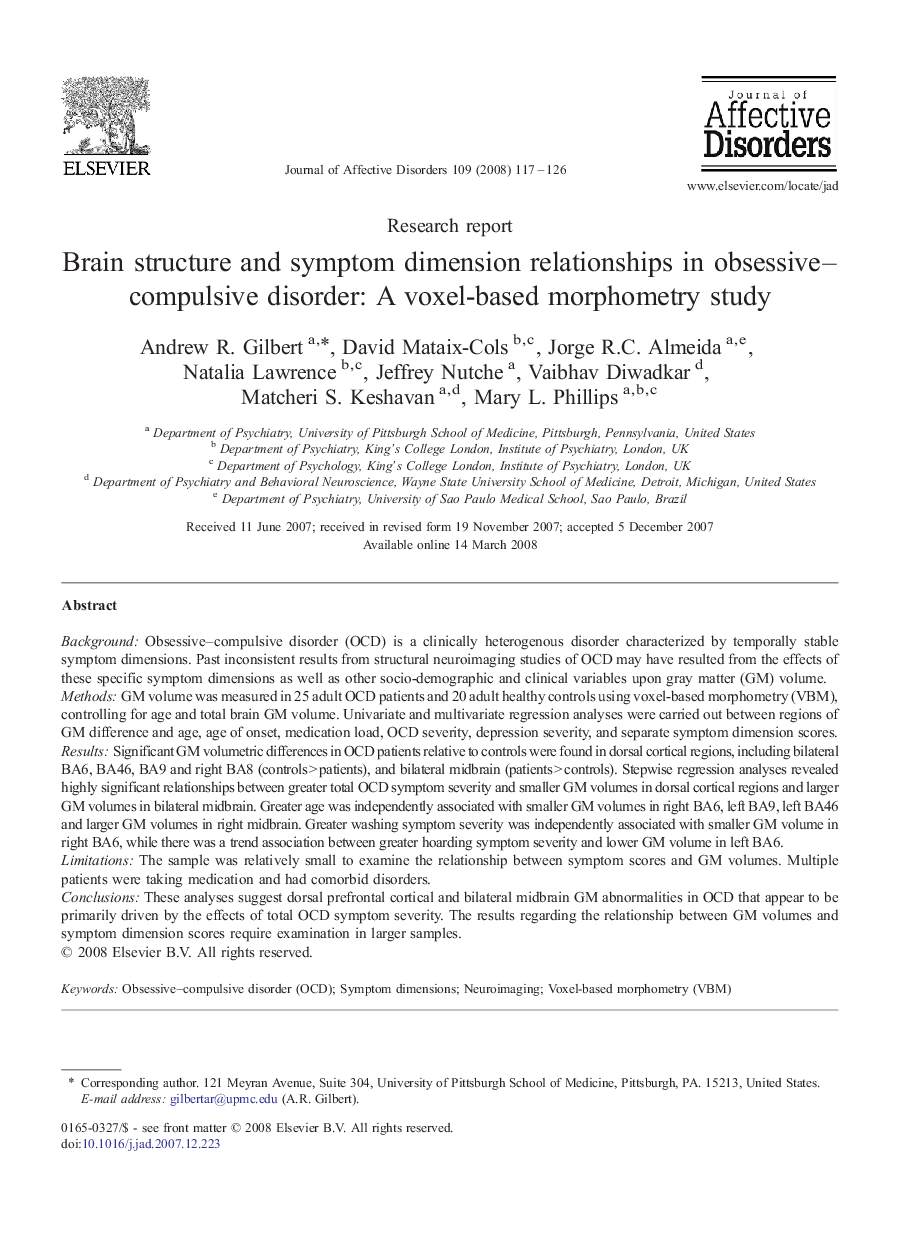| Article ID | Journal | Published Year | Pages | File Type |
|---|---|---|---|---|
| 4187529 | Journal of Affective Disorders | 2008 | 10 Pages |
BackgroundObsessive–compulsive disorder (OCD) is a clinically heterogenous disorder characterized by temporally stable symptom dimensions. Past inconsistent results from structural neuroimaging studies of OCD may have resulted from the effects of these specific symptom dimensions as well as other socio-demographic and clinical variables upon gray matter (GM) volume.MethodsGM volume was measured in 25 adult OCD patients and 20 adult healthy controls using voxel-based morphometry (VBM), controlling for age and total brain GM volume. Univariate and multivariate regression analyses were carried out between regions of GM difference and age, age of onset, medication load, OCD severity, depression severity, and separate symptom dimension scores.ResultsSignificant GM volumetric differences in OCD patients relative to controls were found in dorsal cortical regions, including bilateral BA6, BA46, BA9 and right BA8 (controls > patients), and bilateral midbrain (patients > controls). Stepwise regression analyses revealed highly significant relationships between greater total OCD symptom severity and smaller GM volumes in dorsal cortical regions and larger GM volumes in bilateral midbrain. Greater age was independently associated with smaller GM volumes in right BA6, left BA9, left BA46 and larger GM volumes in right midbrain. Greater washing symptom severity was independently associated with smaller GM volume in right BA6, while there was a trend association between greater hoarding symptom severity and lower GM volume in left BA6.LimitationsThe sample was relatively small to examine the relationship between symptom scores and GM volumes. Multiple patients were taking medication and had comorbid disorders.ConclusionsThese analyses suggest dorsal prefrontal cortical and bilateral midbrain GM abnormalities in OCD that appear to be primarily driven by the effects of total OCD symptom severity. The results regarding the relationship between GM volumes and symptom dimension scores require examination in larger samples.
